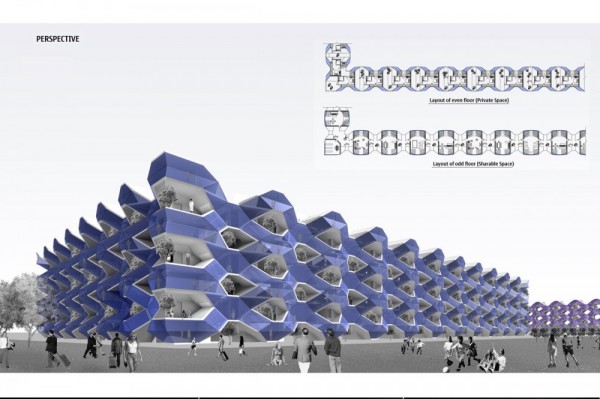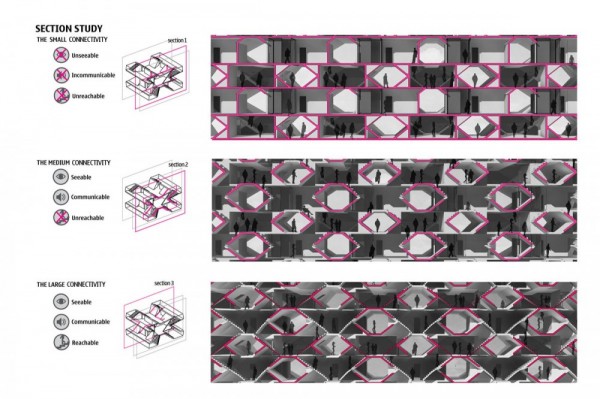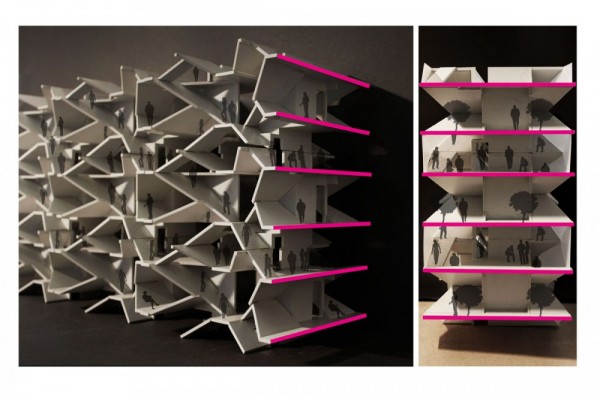In China, the number of young bachelors is drastically raising because of the skyrocketing housing prices and women are unwilling to marry men without a property. As a result, young graduates spend most of their time working hard but remain single until they can afford a property. In order to cater for this trend, developers start launching smaller housing units to the market. This project designed byKellen Qiaolun Huang from Cornell University aims at exploring different ways of how these bachelor housing units can be designed other than just being smaller.
Home activities can be divided into two categories: private activities (sleeping, bathing, etc.) and public activities (cooking, eating, reading, relaxing, etc.). Researching and remapping the topological relationship between these two categories are the keys to this project. An X-shaped pattern is generated as result: a private space is being placed in the center with four quarters of public spaces in the corners. The pattern may seem meaningless to individuals until all units are aggregated to form a large interconnecting social network. This network becomes the prototype of X-House.
Several studies have been carried out to investigate the evolution from an X-pattern to the spatial prototype. The mature X-spatial prototype is a model with bedroom and bathroom space in the center and four quarters of sharable space in those four corners. A typical sharable space includes living room, reading/study room, dining room and a multifunctional room.
Another issue addressed by this X-spatial prototype is the concept of connectivity. There are three degrees of connectivity within this model. The largest degree is allowed by a staircase at the back of the design which provides direct and physical connection. The intermediate degree allows visual connection among people in different spaces at the front of the model. The smallest degree lies in the middle of the X-spatial prototype and gives people some privacy.




